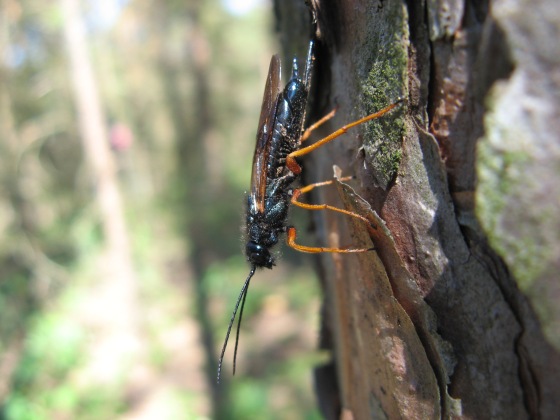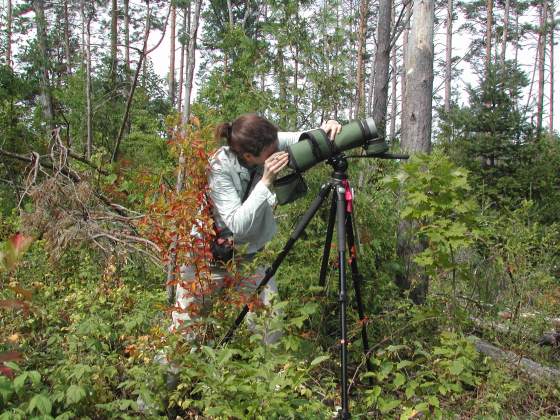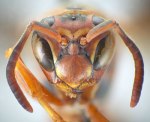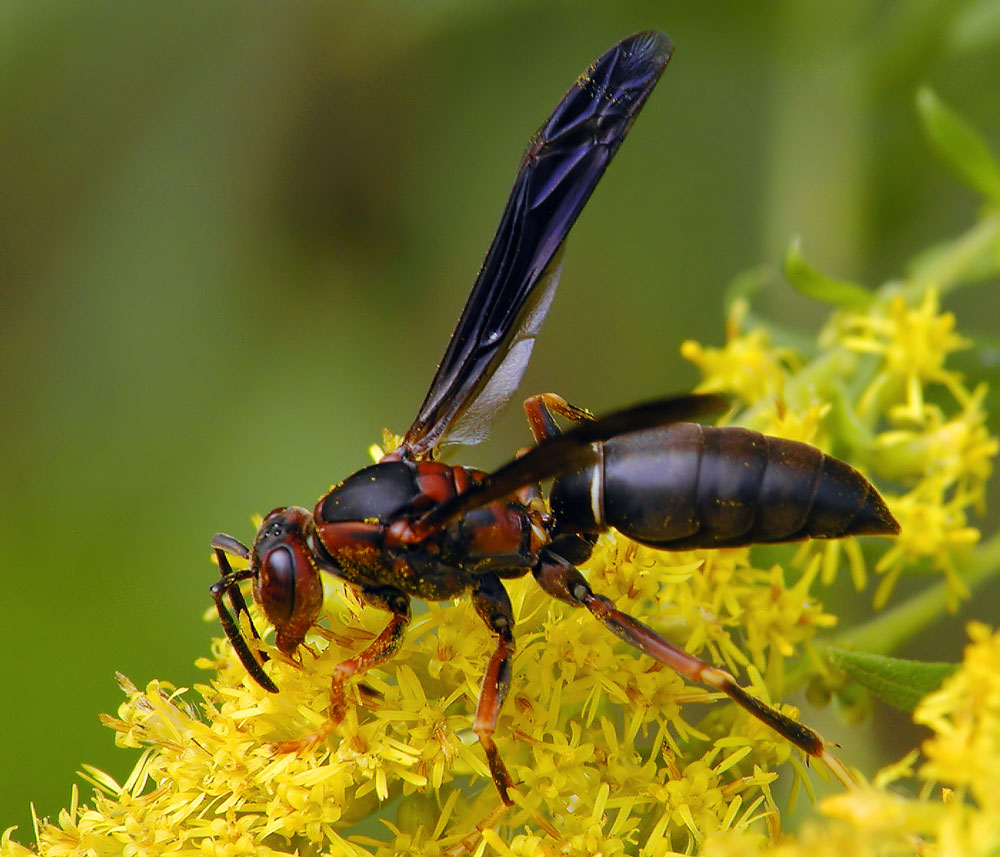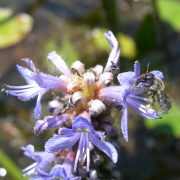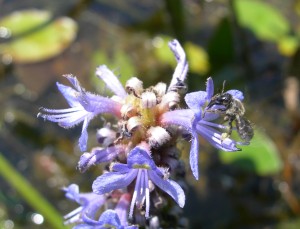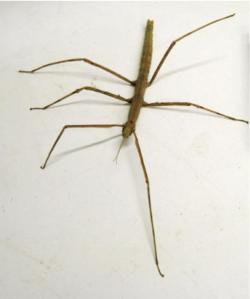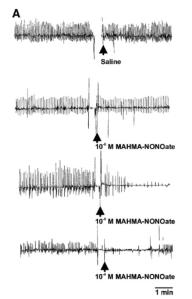by Christopher Buddle, McGill University
————–
As the Editor-in-Chief of The Canadian Entomologist, I have the pleasure of seeing all papers move through the publication process, from first submission to approval of the final proof. This places me in a position to fully appreciate the incredible entomological research occurring around the world. As one way to promote some of the great papers within TCE, I have decided to start a series of blog posts titled “Editor’s Pick” – these are papers that stand out as being high quality research, and research that has broad interest to the entomological community. I will pick one paper from each issue, and write a short piece to profile the paper.
For the first issue of the current volume (145), I’ve picked the paper by Kathleen Ryan and colleagues, titled “Seasonal occurrence and spatial distribution of resinosis, a symptom of Sirex noctilio (Hymenoptera: Siricidae) injury, on boles of Pinus sylvestris (Pinaceae)“. Sirex noctilio is a recently introduced species in Canada, and is a woodwasp that we need to pay attention to. As Kathleen writes, “unlike our native species of woodwasps, it attacks and kills living pines” and because of this, we must strive to find effective ways to monitor the species. One potential approach is to look for signs of resinosis, or ‘excessive’ outflow of tree sap and resins from conifers. The goal of this work was to specifically assess “the spatial and temporal distribution of resin symptoms of attack to optimise sampling“. The work involved Kathleen spending a LOT of time in the field, observing evidence of damage to trees, and assessing timing of resinosis relative to other damage to pine trees as related to woodwasps. In the end, Kathleen was able to confirm that in most infested trees, the appearance of resin was a meaningful detection method. This is a very practical paper, and very useful towards finding the best methods to detect this exotic species.
I asked Kathleen a few questions about this paper and the context of the work.
Q: Kathleen, what first got you interested in this area of research?
A: I became interested in studying Sirex’s interaction with other subcortical insects. Sirex was recently detected in North America at the time and we didn’t know much about it here including how, where and when to find it – all of which were essential in planning research about insect interactions. So this study was my starting point – my “getting to know Sirex” study.
Q: What do you hope will be the lasting impact of this paper?
A: This paper is the result of the many hours of field observations that helped me to become more familiar with Sirex. Since its really basic research, I hope that this paper might be a useful starting point for other people beginning to work with Sirex.
Q: Where will your next line of research on this topic take you?
A: Currently, I’m studying another invasive wood-borer, but I’d like to work with Sirex again – it’s a really interesting and unique insect biologically and ecologically. I’m especially interested in studying Sirex community ecology in its native, European, range to see how it compares to North America.
This is truly an important area of study, and I do look forward to seeing more of Kathleen’s papers in TCE.
Finally, I asked Kathleen about any amusing anecdotes about the research, and she shared this wonderful story with me:
The first day we worked together, my PhD advisor Peter de Groot, dropped me off at a forest site with instructions to only observe and collect absolutely no data. I had been in the forest for only a few moments, when a female Sirex landed right in front of me. So being an entomologist, naturally I caught her. A couple of hours later, still holding her, I met back up with Peter and sheepishly admitted that I had caught some “data”. Thinking it fantastic, from that point forward he told everyone that Sirex had picked me as her project.
I believe that these kinds of stories behind the research make Entomology more accessible and real, and help us appreciate the human element of scientific research.
As a final note, the entomological community was very saddened by Peter de Groot’s death in 2010. His legacy to Canadian Entomology is still very strong.
A special thanks to Kathleen for answering a few questions, and sharing insights into the first ‘Editor’s pick’ for The Canadian Entomologist
———-
Reference: Ryan, K, P. de Groot, S.M. Smith and J. J. Turgeon. Seasonal occurrence and spatial distribution of resinosis, a symptom of Sirex noctilio (Hymenoptera: Siricidae) injury on boles of Pinus sylvestris (Pinaceae). The Canadian Entomologist 145: 117-122. Link.


